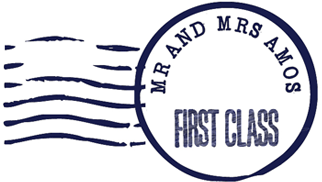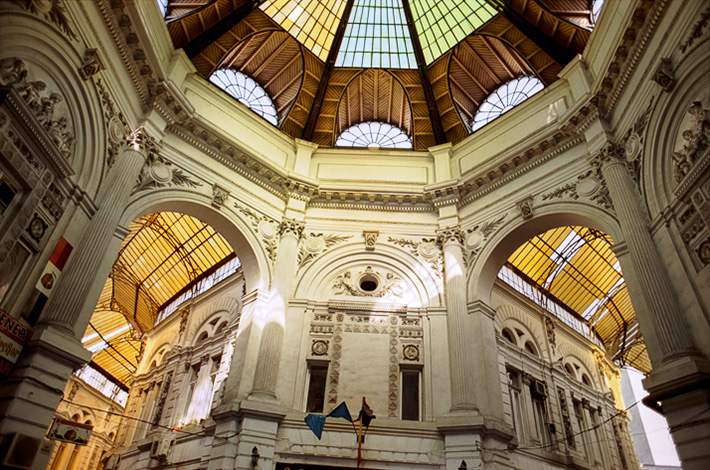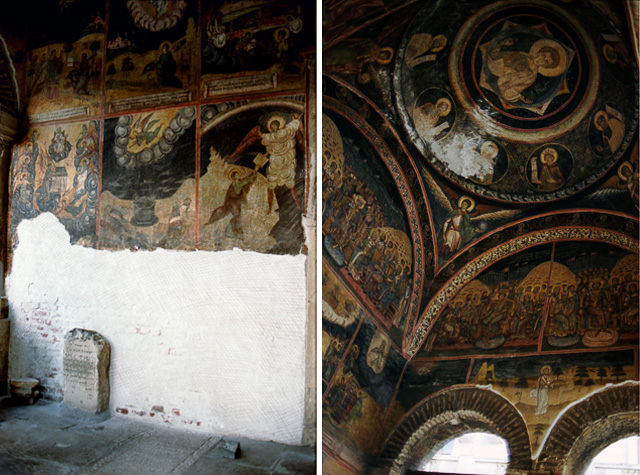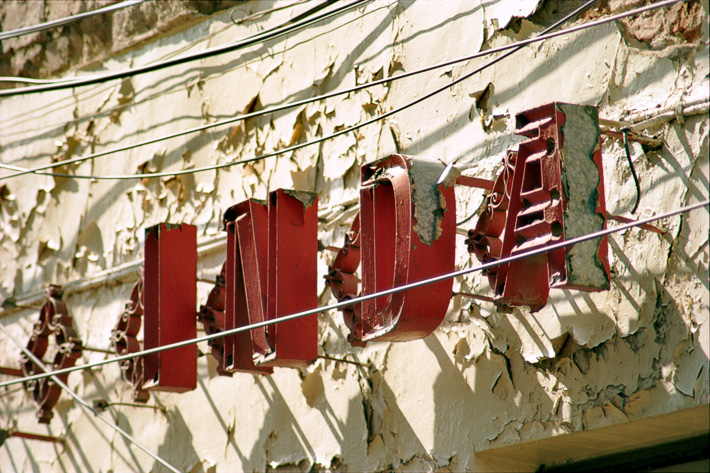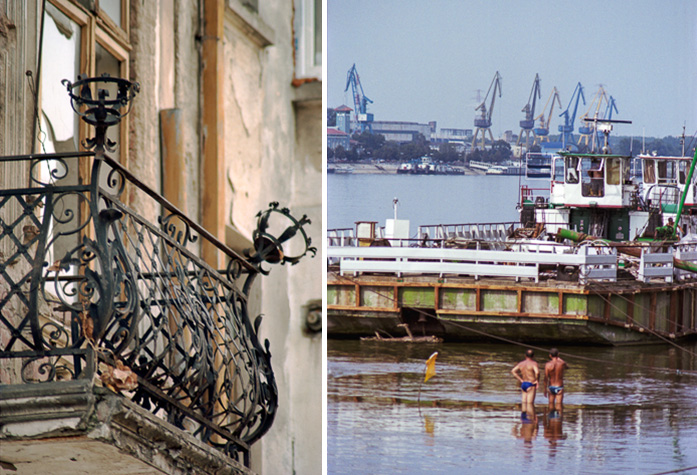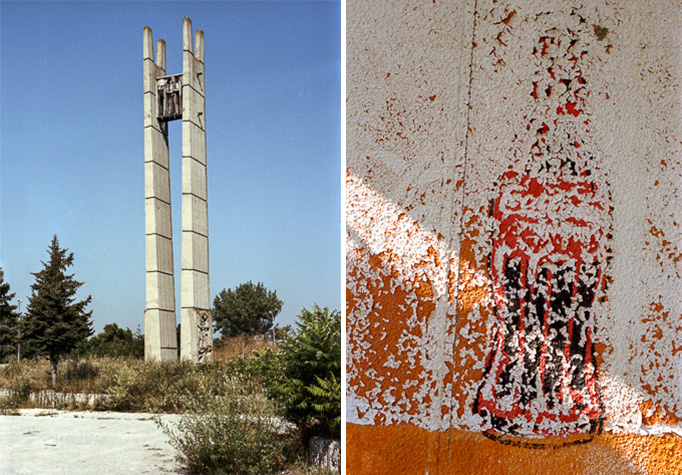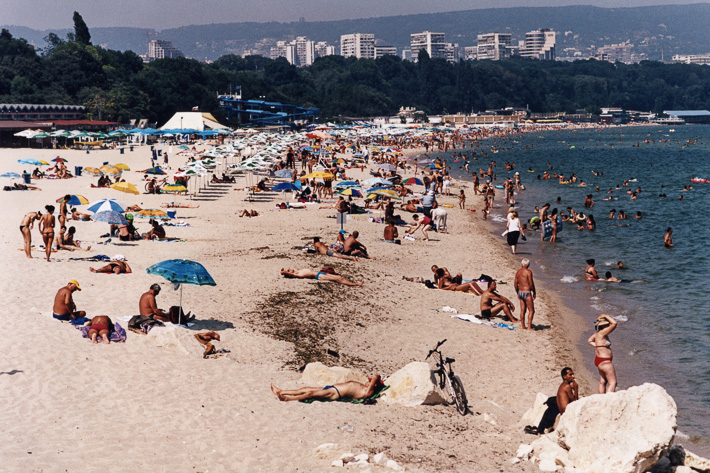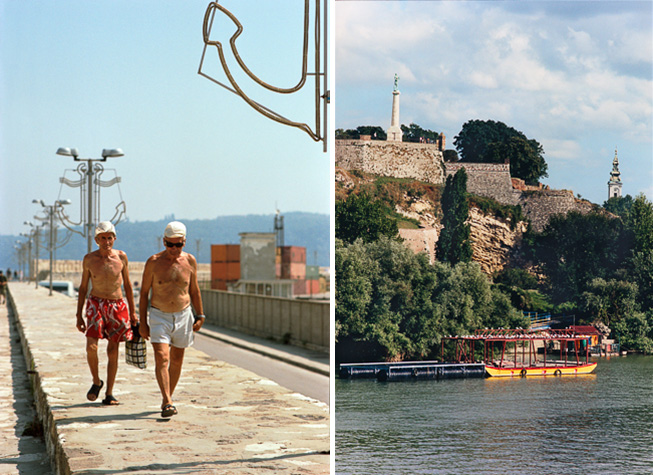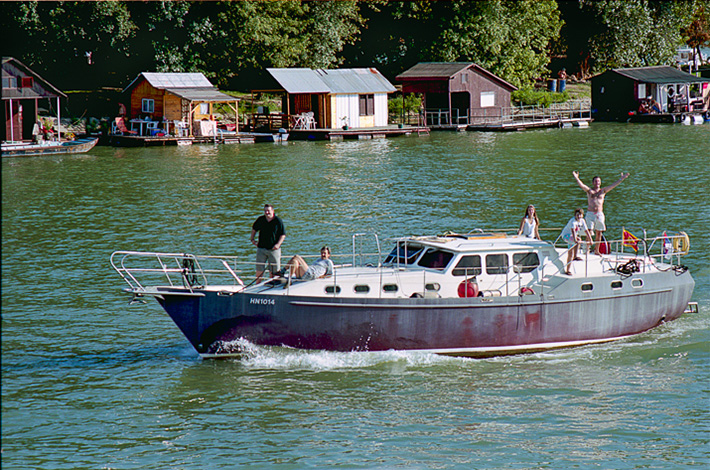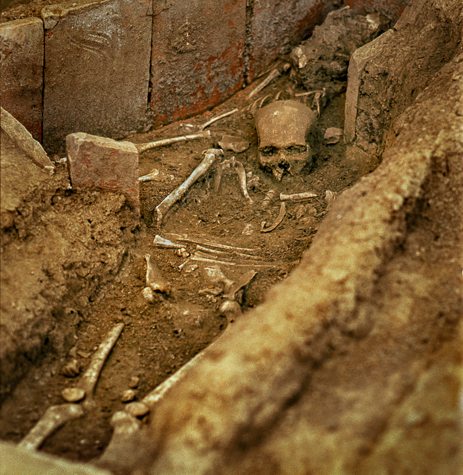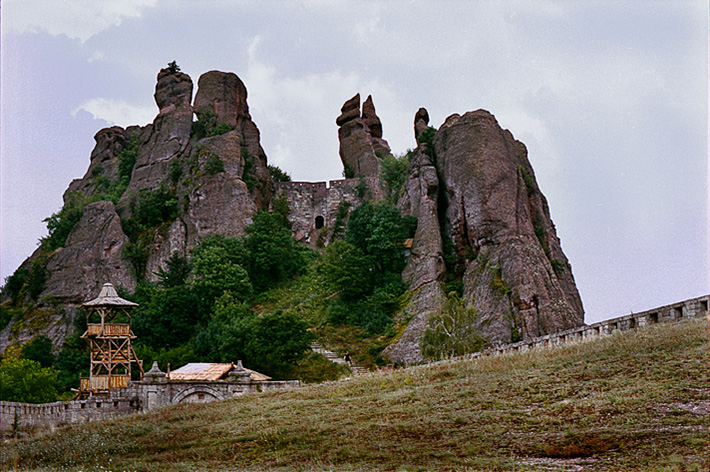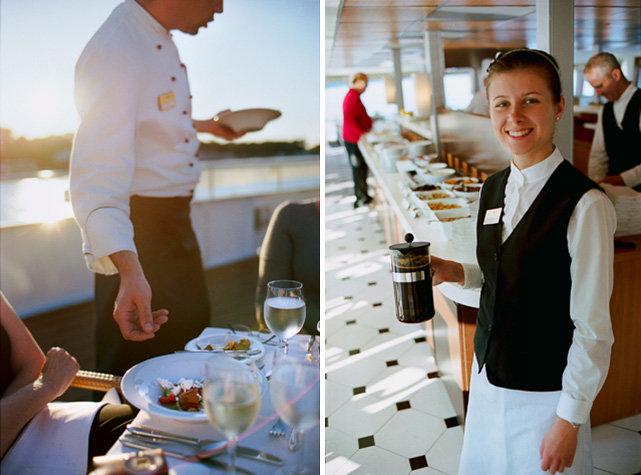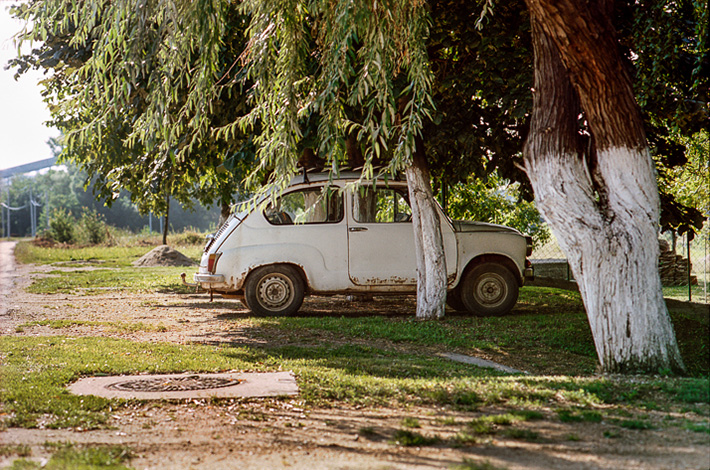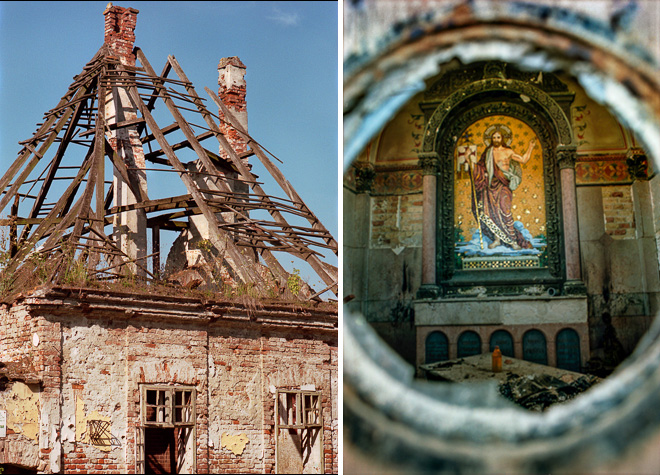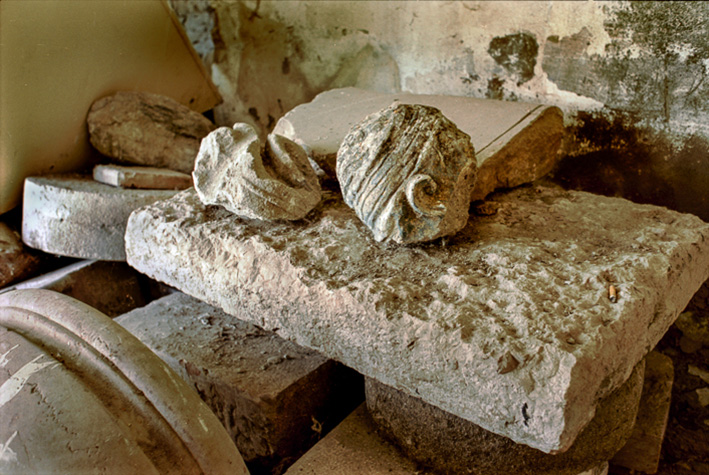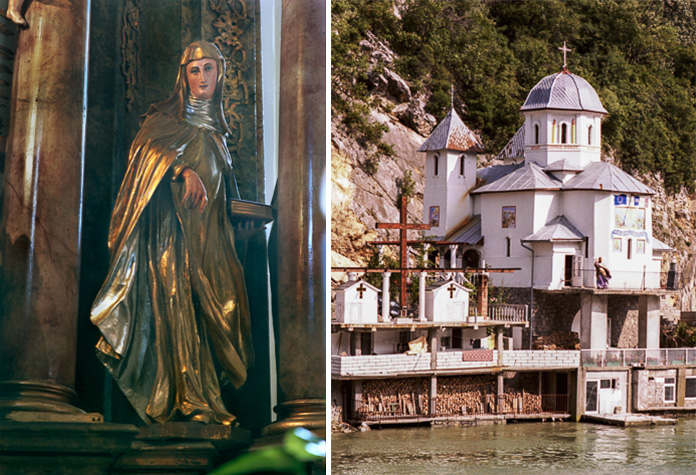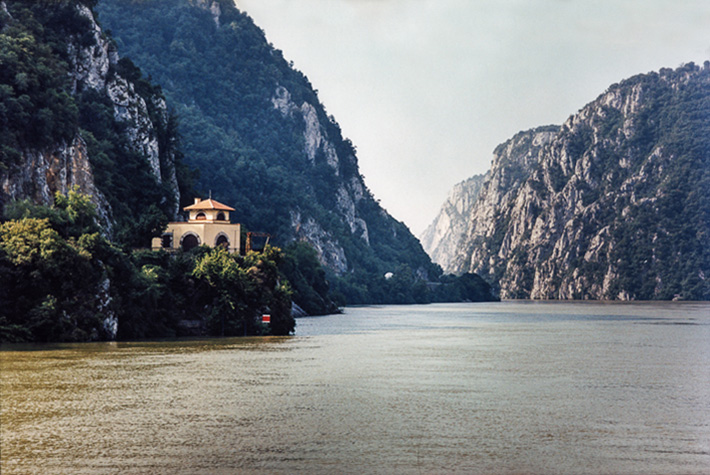The Divine Drift of River Cruising
Get over the fairytales. The eastern Danube is ugly-beautiful.
It’s day two
of our Eastern European river cruise and the only cruising we’ve done is drifting across the Danube from the Romanian side of the river to the Bulgarian side, a distance of less than a kilometre. Eventually the ship will glide upstream towards Vienna, passing through Serbia, Croatia and Hungary, but right now we’re moored at an embankment where corpulent Bulgarians lie along the hot concrete towpath browning themselves in the 35 degree C heat. But we wouldn’t have it any other way. Unlike ocean cruises, river cruises let you get down with the locals. Drifting is just our speed.
This is not the Blue Danube of fairytales and waltzes. It might, in fact, be called the Black Danube, as it travels from the Black Forest to the Black Sea, flowing from west to east. One of the most popular river cruise itineraries is to pick up the ship in Amsterdam and cruise to Vienna. But we’re intrigued by countries emerging from Communism and don’t mind the occasional ugly power station, ruined villa or monstrous Soviet monument, so we start our journey in lovely, faded Bucharest, and disembark eight days later in vibrant Budapest, with several hundred kilometres of small villages, old factories, ancient fortresses, gypsy ghettos and fields of sunflowers in between.
The moment we step on board the differences between this and an ocean cruise are immediately obvious. The river ship operated by Uniworld, the cruising line that rates highly on the Conde Nast Reader’s Choice List every year. The ships are richly appointed with French balconies (those you can’t step out on) and these allow you a personal frame onto the river as it glides by. The ship is more like a large barge than a yacht or ocean liner. It needs to be narrow enough to navigate the 77 locks it will meet on the way to Paris, where river ships often wait two or three abreast to pass through the lock.
Unlike ocean liners, river ships can dock at ports that are barely more than a pontoon and gangplank, meaning it’s only a short walk (or bicycle) into a village. In Eastern Europe these villages aren’t bombarded by hordes of slow-moving tourists tramping their potholed and cobbled streets, and seem genuinely happy to see you. And not just because of the inevitable boost to the economy – in the small Serbian village of Donji Milanovic the Balkan generosity of spirit is most evident when we’re invited to the wedding that’s taking place as we visit the town’s Orthodox church.
IT MIGHT, IN FACT, BE CALLED THE BLACK DANUBE, AS IT TRAVELS FROM THE BLACK FOREST TO THE BLACK SEA, FLOWING FROM EAST TO WEST.
In Eastern Europe the river ports are not always close to the interesting destinations, so there’s quite a bit of sightseeing time spent in buses with a local guide. But it’s perfectly acceptable to break away from the group and explore destinations by ourselves. We find it’s possible to be social at meal times and still manage to tailor the cruise to our own tastes. Sometimes it’s best to accept the inevitable and join the bus tours, because often the reward at the end is the opportunity to discover an intriguing place or landscape, one you’re not likely to visit on your own anyway.
A river cruise is really all about the river itself, not only the surprisingly serene waterways and the hundreds of kilometres of mostly wooded banks, but the history of the river and the successive civilisations that used it as a highway. From the shores of Romania and Bulgaria, situated where the Lower Danube meets the Black Sea, and where the Carpathian mountains meet the Balkan mountains, through Serbia and Croatia to our final destination in Hungary, we experience a part of the world overrun at various times by Celts, Romans, Ottoman Turks, Huns, the armed forces of the Austro-Hungarian empire and, in more recent times, by Nazis, Communists and twisted dictators like Ceaucescu.
Each conquering civilisation has left its mark on the landscape, from the Roman fortifications overlooking Belgrade, the capital of Serbia, which has been razed and rebuilt 44 times in the past one thousand years, to the artillery-strafed watertower in Vukovar, the Croatian town that was 90% destroyed in its war of independence from Serbia in the 1990s.
During the journey, we are bussed to a number of Roman ruins, notably the Fortress of Belogradchick, a citadel built by Ottoman rulers over 1st Century Roman fortifications. (Amusingly, modern day Romans have invaded – an Italian film crew are building wooden watchtowers on the site in readiness for the shooting of a feature film.) A few days later, near the Serbian town of Kostolac, we visit the Viminacium, an excavated ancient Roman city and military camp that is the most significant archeological site in Eastern Europe.
But it’s the history of the 20th Century that proves the most gripping. Everywhere you see the scars of former Communist regimes and encounter the problems these struggling democracies are facing, notably high unemployment and lack of infrastructure. (The 1st Century Roman roads are in better condition than some modern highways our buses navigate.)
In Bulgaria, the democratic revolution began in the pretty but dilapidated port town of Rousse, when hundreds of local women defied the Communist authorities to gather in protest at the Romanian chemical factory across the river that poisoned the local air and caused dreadful lung diseases and malformations in babies. The Communists moved much of the rural population into small cities like Rousse to work in the new factories and built for them high-rise apartment blocks known to the locals as ‘incubators”.
With Glasnost, the Bulgarians and Romanians no longer traded with Russia and so the factories closed, leaving ruined concrete shells throughout the landscape (most of which in summer are now covered in sunflower fields). The locals still live in the ugly high-rise apartment buildings, but a stroll through Rousse reveals narrow streets of once-beautiful, now-ruined stone houses with iron balconies, bearing some influence of the Ottoman Turks that once ruled this part of the world. In the town’s shopping street, a gun shop sits happily among shops selling precious Bulgarian rose oil, the sort of bizarre juxtaposition that’s commonplace in the Balkans.
The highlight of the journey, for me, involves another lesson in modern history. We are invited to lunch in a private home in a village near Vukovar, where our hostess, Mariza, a grandmother who still bears horrible shrapnel wounds from the recent war with Serbia, prepares for ten of us a delicious home-cooked meal. The psychological wounds are still raw from the conflict and people are very anxious for visitors to bear witness. The war is called in these parts “the war of brothers” because prior to 1992 Vukovar was very evenly populated by Serbs and Croats, who took arms against each other when Croatia voted for independence. Even today, with an uneasy peace, the bars and restaurants owned by minority Serbs in the town are not patronised by the Croats.
But elsewhere on our cruise the atmosphere is less muted. It is summer holidays after all. We spend one afternoon cruising up the Sava River in Belgrade, a city of 2 million people – all, it seems, on the river at that moment. The Sava is covered with hundreds of leisure craft and its shores are lined with thousands of little houseboats, all brightly decorated, and restaurants and nightclubs on pontoons in the water. It’s late afternoon and the locals are diving, swimming, jet-skiing, or just lounging on their decks, waving at us. In Varna, a holiday resort on the Black Sea, the scene is equally festive. Thousands of people roast themselves in the sun until they’re dark as burnt lamb chops and cover themselves, not in sunblock, but gold jewellery.
As we glide through the silky water at 16k an hour, I finally understand what’s special about cruising the river. Unlike ocean cruising, you’re passing the world by at a human level. You can smell the sweet-scented grassy banks, listen to children squealing as they splash in the shallows, hear dogs barking and cocks crowing. A priest in gold robes appears on the balcony of an Orthodox church cliff-hanging in the steep granite gorges called the Iron Gates in Romania and waves. River beaches, no bigger than Australian back yards, are crowded with half-naked people, all waving. Even fishermen casting lines from little tin boats raise their arms.
As does a dead bloated pig, feet in air, bobbing by. Slow travel doesn’t have to be predictable.
For further information on Uniworld’s extensive collection of luxury river cruises in Europe go here.
